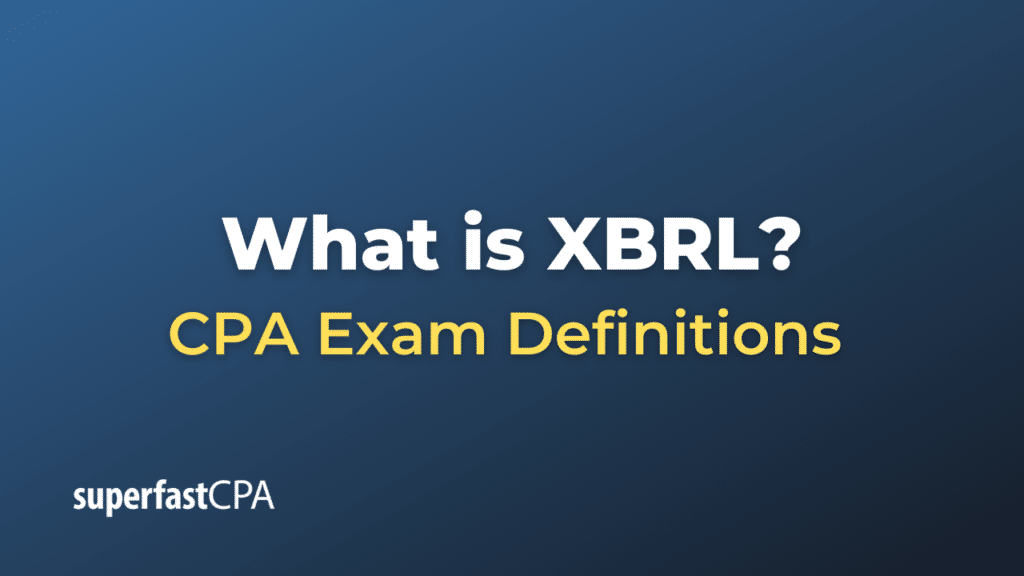XBRL
XBRL, which stands for eXtensible Business Reporting Language, is an open standard for reporting business and financial data. Developed by an international non-profit consortium of major companies, organizations, and government agencies, XBRL aims to make the sharing of business information more accurate, efficient, and reliable.
XBRL is based on XML (eXtensible Markup Language), which is a widely-used standard for structuring data. While XML tells us how to structure data, XBRL goes a step further by defining what the data represents—whether it’s a financial statement item like “revenue,” a specific accounting term, or some other form of business reporting data.
Key Features:
- Tagging Data: XBRL allows each piece of business or financial data to be tagged, making it identifiable and easily searchable. For example, “Net Profit” for the year 2021 can be tagged as such, making it easier to locate and analyze this particular piece of information.
- Standardized Definitions: XBRL provides a standardized set of definitions called “taxonomies” that allow data to be uniformly identified. Different industries or regulatory bodies may have their own specific taxonomies.
- Interoperability: The open standard nature of XBRL allows for easy sharing and comparison of data across different systems and platforms.
- Enhanced Analysis: With data tagged and standardized, it becomes easier to automate the process of data analysis. This is beneficial for investors, regulators, and other stakeholders who need to analyze large volumes of data.
- Global Adoption: Many countries and regulatory agencies have adopted XBRL for the submission of financial statements and other regulatory filings. For example, the U.S. Securities and Exchange Commission (SEC) requires companies to submit their financial statements in XBRL format.
Usage:
- Financial Statements: Companies can prepare their income statements, balance sheets, and cash flow statements in XBRL format.
- Regulatory Reporting: Various forms and reports that need to be submitted to regulatory agencies can be prepared in XBRL.
- Data Analysis: Investors and analysts can use XBRL data for better and more efficient analysis of companies and industries.
Example of XBRL
Let’s take a simple example to illustrate how XBRL works with a financial statement item, such as “Net Income.”
Traditional Reporting
In a traditional financial statement like a PDF or paper document, you might see:
Net Income for the year ending December 31, 2021: $1,000,000While this is readable by humans, it’s not easily interpreted by computers without additional manual effort. Automating the analysis of such statements would require complex programming to extract and interpret this data point accurately.
XBRL Reporting
In an XBRL-enabled document, the same “Net Income” figure would be tagged with metadata providing context. The tag might look something like:
<us-gaap:NetIncome contextRef="FY2021" unitRef="USD">1000000</us-gaap:NetIncome>Here’s what each part of the tag means:
us-gaap:NetIncome: This specifies that the data point is “Net Income” according to the U.S. Generally Accepted Accounting Principles (GAAP) taxonomy.contextRef="FY2021": This provides the context, indicating that the figure relates to the fiscal year ending December 31, 2021.unitRef="USD": This indicates that the amount is in U.S. dollars.1000000: This is the actual net income figure.
How This Benefits Stakeholders:
- Regulators: They can quickly compile and analyze data from different companies, ensuring compliance and assessing financial health more efficiently.
- Investors and Analysts: They can automate the process of data collection and analysis, making it easier to compare multiple companies or industries.
- Companies: The standardized format can make the process of preparing and submitting regulatory filings more efficient.
By converting financial statements to this tagged, standardized format, XBRL significantly enhances the usability of financial data. It makes automation, comparison, and analysis much easier for all stakeholders involved.













